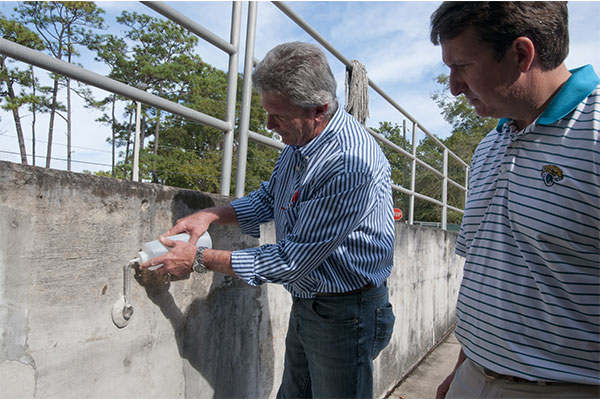Using Proper Field Testing for Waterproof Coatings
Publish Date: 7/25/24 | Author: Beacon
The International Institute of Building Enclosure Consultants (IIBEC) has published an excellent article in its Interface magazine on the importance of field testing for waterproof coatings. Originally presented at a symposium, the piece contains valuable information for anyone in the construction industry, including field workers, engineers and architects.

Specifically, it addresses the fact that it’s extremely rare that a waterproofing material is at fault when the application isn’t successful. That’s why it’s essential to abide by field testing best practices to prevent surface issues that arise during or after a project.
We’ve summarized the piece below for convenience, but we encourage readers to check out the full article as time permits.
Properly Conducting an Industry Field Test
Construction stakeholders know several variables affect the application of waterproof coatings to concrete and masonry structures. They include:
- Substrate strength
- Moisture content
- Application thickness
- Surface preparation
To achieve optimum coating performance, you must understand and control these and other variables. And to do that, you must conduct appropriate field testing following industry standards and best practices from organizations like the International Concrete Repair Institute (ICRI), ASTM International and the American Concrete Institute (ACI). This includes using assessments like RILEM tube and pH testing.
Why Analyze in the Field?
Field workers can’t control variables like the weather, but they can assess and manage many factors to achieve the best possible results. One of the most important variables is the substrate’s suitability for waterproofing. Specifically, does it meet the manufacturer’s recommendations?
You can make that determination using industry-accepted tests during installation or as part of the mock-up process. The results of your tests can then serve as valuable benchmarks as the project progresses. And it’s useful to include testing protocols in project specifications as part of comprehensive quality assurance measures.
Substrate Conditions & Moisture Levels
Most complaints in waterproofing projects can be traced back to substrate problems. Substrates with high moisture content can be problematic, as can those that are deteriorating or that haven’t been properly prepared.
Addressing Surface Moisture
Regarding substrate moisture specifically, surface moisture content, moisture vapor transmission and relative humidity all can affect the application of waterproof coatings.
For example, surface moisture above manufacturer-specified thresholds (commonly 12% for certain acrylics and 5% for non-permeable membranes and overlays) can prevent proper coating absorption, leading to improper curing and delamination. You can avoid this scenario by testing with a low-cost surface moisture meter.
Other Moisture Testing
Of course, surface moisture is just one type of moisture to consider. You can and should perform additional tests recommended by ASTM, including those using:
- Plastic sheets
- Anhydrous calcium chloride
- In-situ probes
Surface Preparation
After assessing a surface’s condition, surface preparation is the next critical step. A sound, clean, profiled and dry substrate is vital to the successful application of waterproofing materials.
ICRI 310.2R, Selecting and Specifying Concrete Surface Preparation for Sealers, Coatings, Polymer Overlays, and Concrete Repair, provides important information on surface preparation.
Testing for Incompatibility
Field testing should include various adhesion tests to detect any material compatibility. Being careful and methodical in conducting assessments like cross-cut adhesion and sealant adhesion tests can help you avoid costly waterproofing and removal and reapplication work.
You must also confirm that applications achieve the manufacturer's recommended thicknesses. Material that is too thick can blister, bubble and sag, while coatings that are applied too thinly can succumb to wear and tear more quickly and fail prematurely.
Field Testing: A Critical Process in Waterproofing Projects
Nobody involved in a failed waterproofing project wants to be left thinking, “If only we’d done better testing!” Field testing takes time, effort and attention to detail, but the payoff is fewer problems, successful projects and happy clients.
Get more information by reading “Using Proper Field Testing for Waterproof Coatings.”